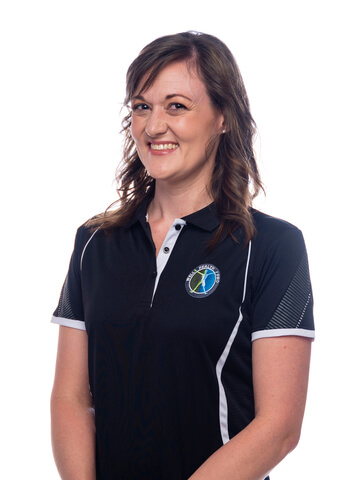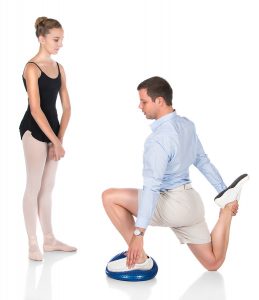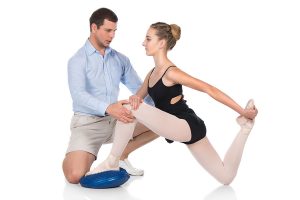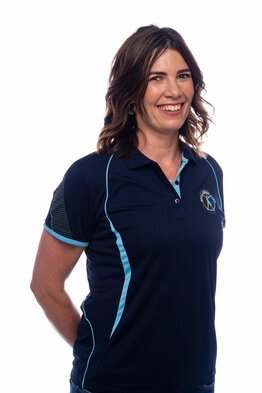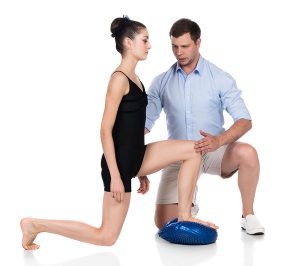Stiff muscles after sitting in front of a computer all day? Muscle stiffness after running a marathon? Then you’ve probably heard someone say that you should stretch more. Is stretching really the “magic fix” for the tightness in your muscles?
You will find all kinds of stretches for different aches and pains on the Internet, but stretching at the wrong time can cause more harm than good. If you stretch an injury too soon it can cause more damage. In conditions like tendinopathy the stretch will give you temporary relief, but make no difference to the actual problem, or even worse.
Some muscle spasms can be stretched, but if the origin is nerve, you’ll tear the fibers apart. Muscle tightness can guard a deeper underlying problem. If you keep on stretching, you’re working against your body’s way of protecting itself. That’s why it import to know if, when and how much or how far you can push into a stretch.
Stretching can be very useful when treating pain and stiffness, though. But how will you know the difference between the right and wrong times for stretching? That’s where a physiotherapist comes in. We find and diagnose what’s causing your tight muscles and (if necessary) give you appropriate stretches at the right time.
What exactly is stretching?
A stretch is when soft tissue, like a muscle, is placed in a lengthened position. Think of a door hinge allowing movement of a door. It can be all the way open or closed, but there’s also a range in between where it isn’t one or the other. When the door is completely open the hinge stops further movement. This can be compared to a muscle in an elongated position where it stops further movement like reaching down to touch your toes. You will feel a stretch at the back of your thighs as your hamstring muscles move from a relaxed position in standing to an elongated position as you lean forward.
Why we use stretching during treatment
To answer this question we need to recap what a muscle does first. Muscles are attached to your skeleton and their main function is to make movement possible. If the muscle contracts or shortens, the two ends move towards each other. For instance the small muscles in your hand contract to make a fist when you pick up a grocery bag or your keys. When you put the bag down or drop your keys the muscles relax and let you open your hand again.
The problems start when the muscles get “stuck” in a shortened position, also known as a muscle spasm. If we think of the hand analogy again – you’ll never get anything done if your hand is always closed in a fist. Pain, fatigue, stress and sustained positions are some of the causes of muscle tightness. Causing that constant feeling of spasm and discomfort when you move. This muscle tightness also puts extra strain on your joints and nerves leading to a vicious cycle of pain, leading to muscle spasm and muscle spasm leading to pain.
Stretching as part of treatment can help restore the balance between the contract and relaxed phases of a muscle. This will help you with pain relief and can also improve the constant feeling of stiffness. Stretching can also be a useful part of rehabilitation to inhibit (or deactivate) tight muscles that limit movement, allowing us to target other muscle groups more effectively.
Benefits of stretching
- Pain relief
- Increase range of movement
- Decrease muscle tension
- Retrain movements
- Improve motor control
- Restore balance between muscle groups
- Prepare muscles for exercise or training
- Increase blood flow
- Break down scar tissue and adhesions
- Increase tissue flexibility
- Decrease muscle spasm
“The right stretch at the right time is easy to do and can give you instant relief”
Stretching as part of physio treatment
Stretches are used as part of treatment, in conjunction with other techniques. A stretch can last anywhere between a couple of seconds to a minute, depending on the goal and type of stretch. Many techniques that your physiotherapist will use during your session can stretch soft tissue structures (like muscles, ligaments and connective tissue) to varying degrees. These techniques might not feel like the stretches that you are used to. For example, moving your shoulder or pressing on your spine will stretch the muscles and other structures around these joints.
Physiotherapists are qualified to determine if stretching will benefit you and your problem. It is most commonly used for muscle spasm or tightness, but will also affect the nerves, ligaments, and joints in the area. Stretching can be applied to all kinds of musculoskeletal injuries to help reduce pain and muscle spasm. In some cases, stretching can also help to inhibit overactive muscles that limit joint movements.
Don’t think you’ll just get a load of stretches to fix your pain. In fact, that’s where a physio will use their anatomical and physiological knowledge to establish a treatment plan. This will determine what must be done and when to speed up recovery while still being safe.
Different types of stretches
Static stretching
This is probably the most “famous” – or infamous – of all stretching techniques. The stretch involves putting the muscle in a lengthened (stretched) position and holding it there for a certain period of time, usually 30 seconds. Static stretches can either be active – stretches that you perform yourself – or passive, where another person applies the stretch.
A static stretch uses low force and long duration resulting in a decrease in stiffness of the muscle. The decreased stiffness is why you will find that your range of movement improves after a static stretch. However, static stretches can also cause a temporary decrease in muscle strength and performance. This means that dynamic stretches are a better option if you use stretching as part of your warm-up routine.
Dynamic stretching
A dynamic stretch involves performing a movement through the available range. These stretches are often used as a warm-up before competitions or training and can be adapted to your specific activity. For example, a soccer player repeating a slow, controlled kicking motion as part of a warm-up. The range of motion increases gradually with each repetition until full range of movement is reached.
Ballistic stretching
This kind of stretch can be seen as a type of dynamic stretch but adds a “bounce” in the fully stretched position. These stretches are mostly used in gymnastics, ballet or acrobatics where extreme ranges may be beneficial. However, this kind of stretching can cause damage to joints and ligaments and is no longer recommended. You should never try these stretches on your own without proper supervision and expert advice.
Pre-contraction stretching
This kind of stretching is also known as Proprioceptive Neuromuscular Facilitation Stretching (PNFS). PNF stretching, post-isometric relaxation (PIR) and post-facilitation stretching (PFR) are examples of pre-contraction stretching.
The basic technique involves a contraction of the targeted muscle or the muscle doing the opposite action, followed by a stretch. Proprioceptive Neuromuscular Facilitation uses diagonal movement patterns combined with contraction and stretching. Post-Isometric Relaxation uses a smaller contraction force (about 25% of the maximum contraction) which is followed by a stretch. Post-Facilitation Stretching uses maximal contraction of the muscle in the middle of the available range followed by a 15-second stretch with the muscle in a lengthened position.
Anatomical Changes you’ll notice
When you perform a stretch, you will feel a strong pulling sensation at some point during the movement. The “tighter” the muscle is, the sooner you will feel this discomfort or even pain. Even though you know that you should be able to move further, this feeling of tightness or pulling will stop you. This happens because your nerves can modify messages to your muscles. Normally, this safety mechanism only kicks in to prevent injury. When you use your triceps to straighten your arm, for example. If your arm is completely straight, the tightness in your muscles will stop you from hyperextending your elbow.
However, this mechanism can start to cause problems if we stay in the same position for most of the day. The nerves recalibrate to respond to the stretch too soon, before your muscle is in its fully elongated position. Almost like the muscle “forgets” how much movement is safe. A very common example is trying to touch your toes when the tightness in your hamstrings stops you from even reaching your knees.
Using the right stretches at the right intensity and the right time can help your nerves to learn how much movement is safe again. As you perform your stretches regularly, you will move more comfortably without being stopped by the tightness.
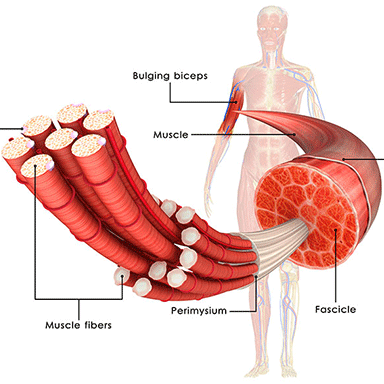
Stretching Changes on a cellular level:
Muscles are made up of bundled muscle fibers. The building blocks of these fibers are called sarcomeres made up of thin overlapping myofilaments. Your nerves send a signal to the sarcomeres to contract, causing more overlap of these filaments. This leads to a shortening, or contraction of the muscle. When the activity or movement is completed, your muscle should go back to a relaxed position.
Another nerve signal causes the overlap to decrease and the result is elongation of the muscle. It is important to note that muscles do not work on an “all or nothing” principle. While some sarcomeres contract, others can stay in a relaxed position and vice versa. For instance, when you pick up a feather you need fewer sarcomeres to contract than when you’re holding a heavy bag of groceries.
Stretching happens when all the sarcomeres are in a fully elongated position. The connective tissue around the muscle will only begin to take up the tension at this point.
Stretch reflex
A stretch reflex is another safety mechanism built into our muscles. Special receptors called muscle spindles are located in muscles. These receptors detect changes in the length of the muscles and how fast this change happens. If the change happens too fast, you might not be able to control or stop the movement in time, leading to injury.
To prevent this from happening, a sudden, quick stretch will trigger the muscle spindle, sending a signal to your spinal cord. Your spinal cord, in turn, activates other nerves to cause a contraction in the stretched muscle. The goal of this contraction is to resist the sudden change in length (i.e. the stretch). This whole process takes about 1-2 milliseconds and is called a stretch reflex.
However, our bodies are amazing at adapting to change, so stretching can affect the activation of the muscle spindle. With practice and repetition, this built-in safety mechanism adapts to allow bigger and faster movements without firing. In everyday terms that will mean less muscle stiffness and more comfortable movement.
What can you expect to feel when stretching?
A stretch should never cause severe or intense pain. Mild pain that feels more like discomfort can also be acceptable, but the stretching sensation should always feel like something you can tolerate. For the most part, you will notice that the pulling sensation gradually fades and relieves tension in your muscles. If you feel an increase in discomfort or the position becomes painful, stop and ask your physiotherapist to check your technique.
When you perform a static stretch, you should feel a pulling sensation in the muscle. Not too intense that you don’t want to hold the position, but enough to create tension in the muscle. In the case of dynamic stretching, you should stop the movement when you feel resistance or pulling. With each repetition, you will notice that you can move further before you feel resistance. Never push yourself through this resistance.
How long does stretching take?
Your physiotherapist will determine which stretches (if any) are appropriate for your problem. Static stretches are held for about 30 seconds, some PNF stretches last 15 seconds and dynamic stretches move in and out of resistance without a hold. With the correct diagnosis, we can prescribe the correct stretches. We can also guide you on how often you should perform your stretches.
However, it’s important to remember that stretching will never be the only technique used during your session. The treatment will usually also include other soft tissue techniques, joint mobilization or electrotherapy. All our physiotherapists have many years of experience using a combination of techniques and modalities specific to your problem for long-term results.
How many times will stretching be used?
Frequent stretching, rather than aggressive stretching, will get better results. Stretching will always be used in conjunction with other treatment modalities. You may also get stretches to do at home as part of your exercise program. In the early phases of treatment, you will notice that you have to perform stretches multiple times a day to keep the muscle tightness under control. As your condition improves during the course of treatment, you won’t feel the need to stretch as often.
Stretching is prescribed like medication – sometimes you need a bit more to get the desired range. When the goal length is reached, the focus shifts to maintaining the available range rather than gaining more. Along the process, we might find other areas that need more attention, and change the program to target them. Every stretch is given with a specific goal in mind.
Your physiotherapist will discuss a treatment plan with you, after which you will have an idea of how long it will take for you to gain muscle range and how often you will need treatment.
What can I do at home to get long-term results from stretching?
Effective treatment is a team effort, so doing your part is crucial to get the results you want. You can help the process by following your physiotherapist’s advice and doing the exercises prescribed during each session. Our team of experts will usually give you practical advice that is easy to follow – like how you can adapt your computer setup or sleeping position. Small changes in your daily routine can make a big difference in keeping muscle tightness from taking over.
Cost involved with stretching treatment
Stretches in isolation will not fix your problem, so stretching will not be used on its own. It’s the complete treatment package that leads to real improvement.
During your session, your physiotherapist uses a variety of stretches. These might not always feel like the traditional stretches you know. You can still rest assured that our expert team will choose stretches and techniques appropriate to your problem.
You can also do the prescribed stretches at home between sessions, making it a practical and cost-effective treatment technique.
Medical Aid Code – 501 or 305
There is no designated code for stretching. Stretching will form part of the 305 or 501 consultation codes as re-education of movement or a rehabilitation program. It often takes place at the same time as other techniques.
Most good medical aids offer reimbursement for rehabilitation and re-education of movement.
Does it make a difference to have an experienced physiotherapist prescribe and perform stretches?
Absolutely! Our experienced physiotherapists can diagnose your injury and give you the right stretches at the right time. Experience allows your therapist to adapt and change your stretches, guided by how you respond to treatment. Different injuries, painful conditions, and stages of healing need different kinds of stretching.
For example, stretching sciatica in the early phase irritates the nerve and will make your pain much worse. However, as the condition improves and heals we must add stretches to your treatment, as it’s a vital component in the intermediate healing phase.
Our physiotherapists have the necessary knowledge about your body’s anatomy and understand different painful conditions and injuries. We have years of experience treating pain and know exactly how to use stretches as part of your treatment.


